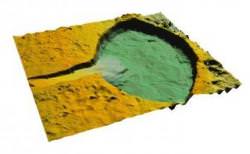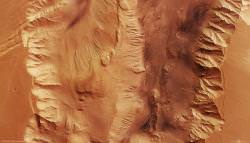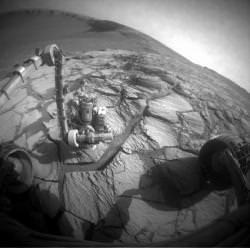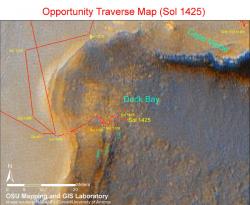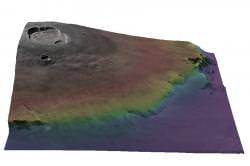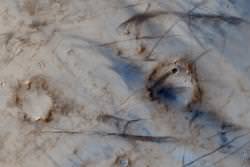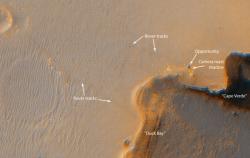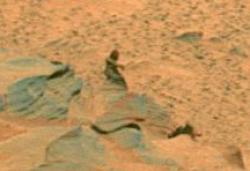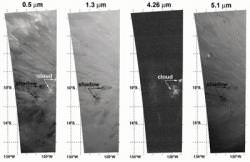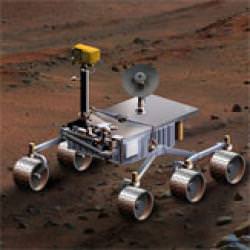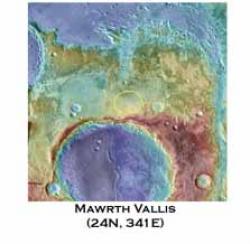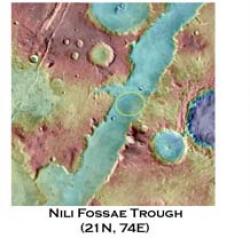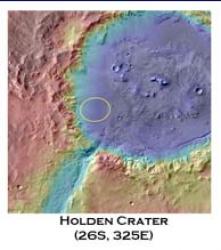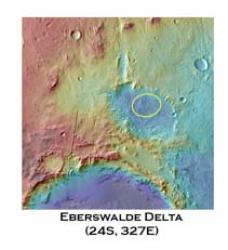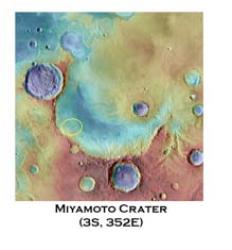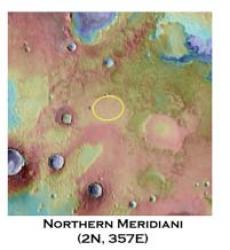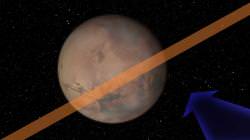Many basin-like features observed on the Martian surface appear to have a fanned feature around possible inlets. Much like river deltas, scientists believe these Mars inlets have similar properties as their terrestrial counterparts, where the flow of water would slow into a basin reservoir, dropping suspended material and depositing it as silt, forming deltas. However, some Martian delta features have a stepped structure. This is not observed on the Earth, so how were they formed on Mars? Researchers suggest sudden flows of water may be to blame…
More and more evidence for ancient Mars water appears to be accumulating every day as images continue to be sent back from the numerous orbiting satellites and two rovers, Mars Explorer Rovers Opportunity and Spirit. Although recent findings suggest the water may have been poisonous to life on early Mars, reducing the likelihood of finding ancient microbial life, the nature and mechanics of water storage and release will be of tremendous value to understanding the evolution of the planets and perhaps helping future Mars colonies when tapping into a source of H2O.
Using a laboratory experiment intended for science students, researchers from Utrecht University, in the Netherlands, were able to reproduce stepped river deltas by pouring water through a flume, filled with a hollowed out sand basin. On pouring water in bursts, sand sediment was eroded from the inlet channel and deposited in the basin reservoir. As the bursty water input continued, steps in the sediment were created as the sand was deposited in layers.
The research to be published in Nature (Feb. 21, 2008), “Martian stepped-delta formation by rapid water release,” is able to draw some parallels with images being sent back from the Mars Orbiter Laser Altimeter (MOLA) on board the Mars Global Surveyor (MGS) and characterize this one source of Martian water. Based on MOLA observations of fans of 20 kilometers in basins of 100 kilometer-scale on Mars, they calculated the conditions for the creation of a stepped fan and found that by comparing with sediment transportation models, that these stepped features would only take a few tens of years to form. This is in striking contrast to other hydrologic features on Mars that take anywhere between hundreds to millions of years to form. Stepped delta features would therefore require large volumes of fast-flowing water to be created.
One possible reason for this sudden release of water could be from sub-surface pressures, as explained by Erin R. Kraal, now a geosciences research scientist at Virginia Tech, “We suggest the water was released internally, such as hydrothermal water suddenly pushed to the surface.”
Although the search for life may have taken a serious blow, future Mars settlement planners will be enthusiastic about finding sites for aquifers to sustain future human exploration of the Red Planet.
Source: Physorg.com

